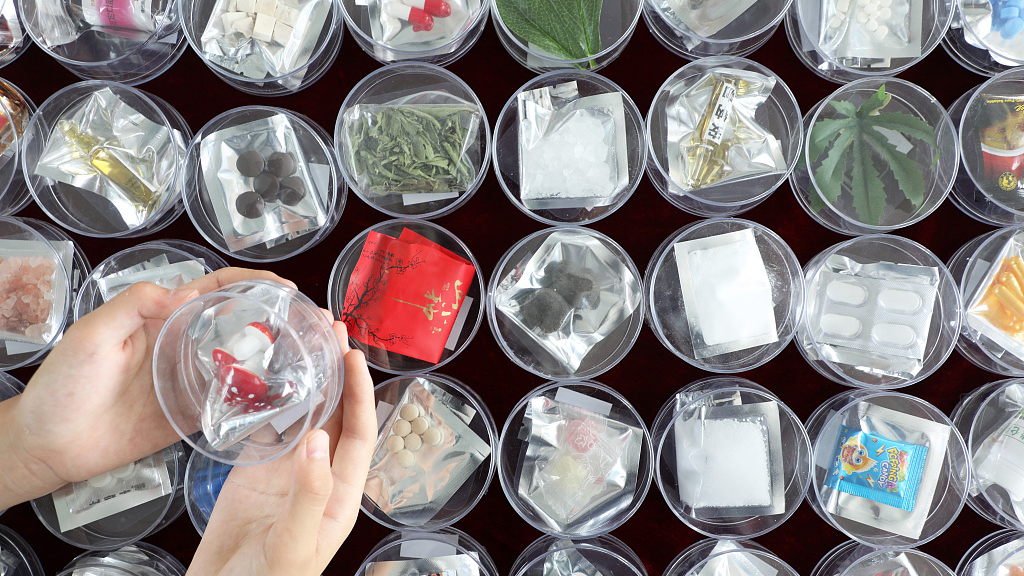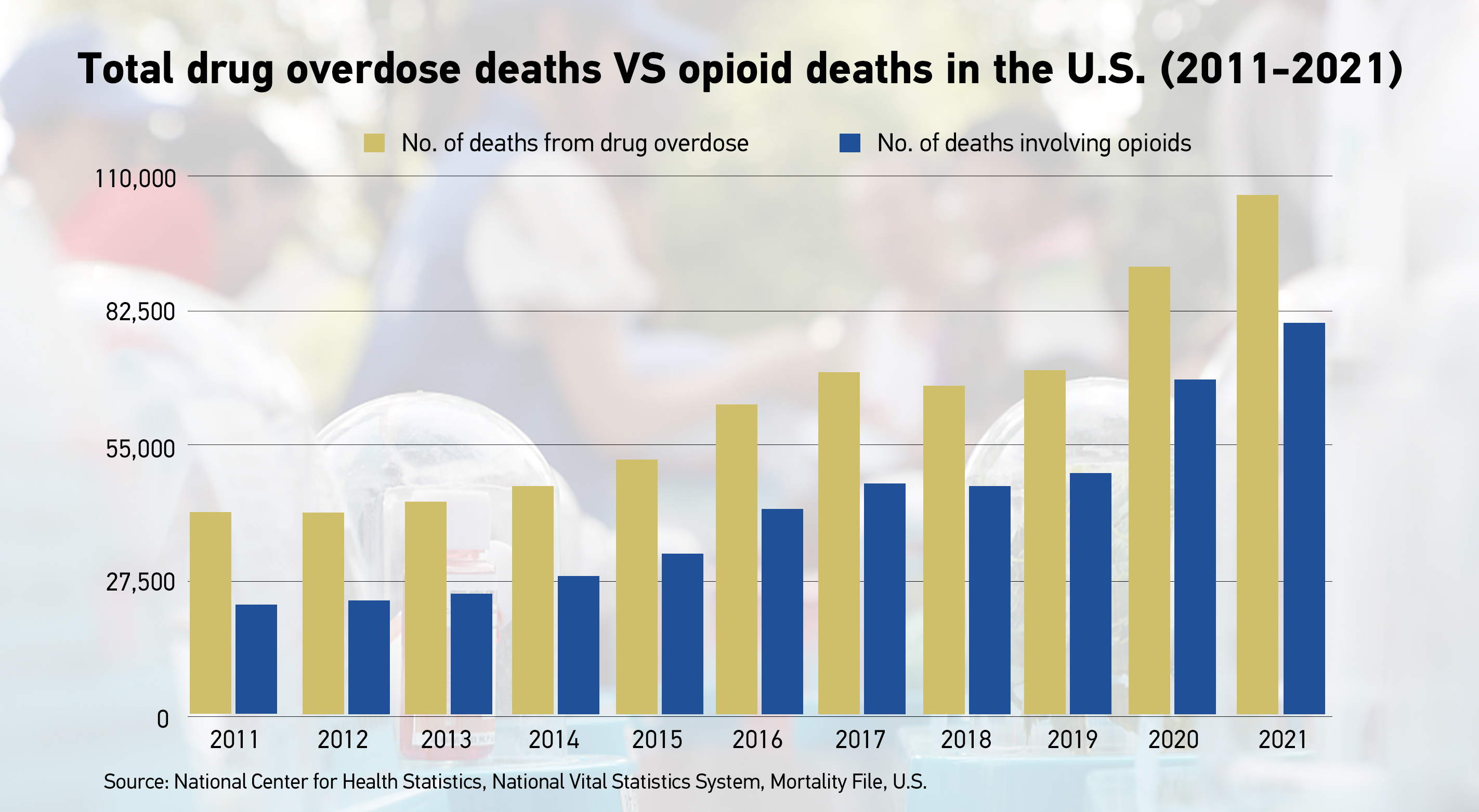
The simulated drug samples on display in Tangshan City, north China's Hebei Province, June 25, 2023. /CFP
The simulated drug samples on display in Tangshan City, north China's Hebei Province, June 25, 2023. /CFP
The overall drug situation in China has continued to improve, with drug-related crimes decreasing and the scale of narcotics supply, consumption and abuse continuing to shrink, according to a recent report.
Drug-related crimes the lowest in eight years
The number of drug-related criminal cases in the country has dropped from a peak of more than 160,000 in 2015 to 35,000 in 2022, the lowest in eight years, according to the China Drug Situation Report 2022, which was released by the Ministry of Public Security on June 21, days before the International Day Against Drug Abuse and Illicit Trafficking, which falls on June 26.

The report also revealed that the scale of drug abuse continues to shrink, with around 1.12 million drug users recorded at the end of 2022, a decrease of 24.3 percent compared to 2021.
And the number of those who have quit drugs for nearly three years without relapse has been increasing for 10 years, said the report.
"The overall situation of China's anti-narcotics fights is showing a positive trend," said Wei Xiaojun, head of the Ministry of Public Security's narcotics control bureau, adding that China's public security departments have also constantly innovated and improved the drug control system in recent years.
For example, China has established more than 300 anti-drug social organizations and associations and developed more than 8.2 million anti-drug volunteers, showed the report.
A part of multinational efforts
Besides the domestic efforts, China has signed 50 inter-governmental or inter-departmental cooperation documents on drug control with more than 30 countries or national coalitions, set up 13 anti-drug border liaison offices and jointly cracked down more than 800 major cross-border drug cases, according to the report.
"China has actively participated in international cooperation to combat drug smuggling in the Greater Mekong Subregion," said Jeremy Douglas, UN Office on Drugs and Crime (UNODC) Regional Representative for Southeast Asia and the Pacific.
Echoing Douglas, Sritrakool Waeladee, director of the Foreign Affairs Bureau of Thailand's Office of Narcotics Control Board, said China has devoted "real hard efforts" to work with countries in the region against drug trafficking, including joining joint patrol operations and providing training courses on areas including chemicals control.

Challenges ahead
Despite the positive trend, the global drug tide continues to spread, and drug trafficking activities continue to be active, said Sun Zhijie, an official with the General Administration of Customs, at a press conference. Sun added that China is facing a complex and volatile drug control situation.
Globally, more than 296 million people used drugs in 2021, amounting to an increase of 23 percent over the previous decade, said an annual report released by the United Nations Office on Drugs and Crime on Sunday.
The consumption of common drugs, such as heroin, which are widely abused, has generally declined, while the number of people who abused new psychoactive substances, such as synthetic cannabinoids, has increased throughout the year, said the China Drug Situation Report 2022.
The cheap, easy and fast production of synthetic drugs has increasingly threatened the health and well-being of people worldwide. In the United States, the overdose of synthetic drugs has taken up larger part of the deaths from drug overdose in recent years. The country nowadays is struggling with another synthetic drug called xylazine.
Moreover, more and more drug traffickers are turning to the internet to facilitate deals.
In 2022, Chinese authorities investigated 2,761 cases of drug trafficking on the internet and seized 1.2 tonnes of drugs, an increase of 119 percent compared to the previous year, said the China drug report.